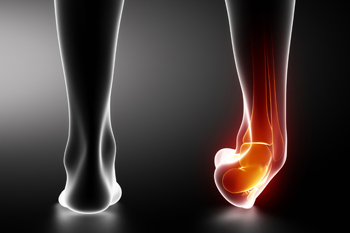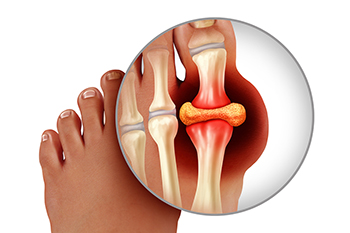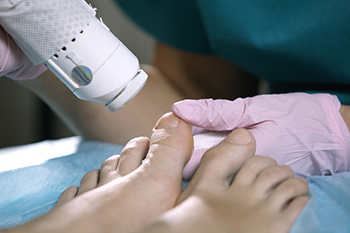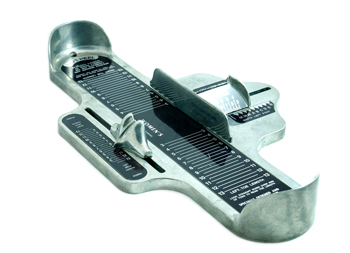Items filtered by date: January 2024
Common Foot and Ankle Injuries in Soccer

Soccer, a dynamic sport demanding agility and skill, often comes with its share of foot and ankle injuries, falling into acute and cumulative categories. Acute injuries, stemming from falls or player collisions, can be traumatic. Conversely, cumulative injuries result from repetitive stress, causing progressive aches and impairments. Soccer players frequently encounter lateral ankle sprains, occurring when kicking with the top of the foot, and medial ankle sprains from toe-out movements with the foot flexed upward. The chronic Achilles tendonitis, felt as pain in the back of the ankle, is a consequence of soccer's repetitive and sudden movements. A more severe injury, an Achilles tendon rupture, involves a partial or complete tear with an audible popping sound, often happening during fast, explosive actions on the field. Stress fractures, prevalent among soccer players, arise from overuse or repeated impacts, leading to bone bruising or slight cracking. These injuries often trace back to overuse, poor conditioning, or insufficient warm-ups. It is suggested that if you or your child incur foot and ankle injuries from playing soccer, you schedule an appointment with a podiatrist.
Sports related foot and ankle injuries require proper treatment before players can go back to their regular routines. For more information, contact one of our podiatrists of Toms River Podiatrist . Our doctors can provide the care you need to keep you pain-free and on your feet.
Sports Related Foot and Ankle Injuries
Foot and ankle injuries are a common occurrence when it comes to athletes of any sport. While many athletes dismiss the initial aches and pains, the truth is that ignoring potential foot and ankle injuries can lead to serious problems. As athletes continue to place pressure and strain the area further, a mild injury can turn into something as serious as a rupture and may lead to a permanent disability. There are many factors that contribute to sports related foot and ankle injuries, which include failure to warm up properly, not providing support or wearing bad footwear. Common injuries and conditions athletes face, including:
- Plantar Fasciitis
- Plantar Fasciosis
- Achilles Tendinitis
- Achilles Tendon Rupture
- Ankle Sprains
Sports related injuries are commonly treated using the RICE method. This includes rest, applying ice to the injured area, compression and elevating the ankle. More serious sprains and injuries may require surgery, which could include arthroscopic and reconstructive surgery. Rehabilitation and therapy may also be required in order to get any recovering athlete to become fully functional again. Any unusual aches and pains an athlete sustains must be evaluated by a licensed, reputable medical professional.
If you have any questions please feel free to contact our office located in Toms River, NJ . We offer the newest diagnostic and treatment technologies for all your foot and ankle needs.
Types of Ankle Fractures

Ankle fractures are common in injuries, making up approximately 10 percent of all fractures in trauma cases. They usually occur more in young men and older women. When there is a bigger accident with multiple injuries, ankle problems can greatly interfere with movement. There are different ways to classify ankle fractures. One way was introduced by Percival Pott, who looked at how many parts of the ankle bones got broken. There are two other systems called Lauge-Hansen and Danis-Weber that also offer ways to think about how the injury happened and how stable the break is. Each system offers good information. When doctors look at X-rays of ankle fractures, they have a certain way to approach repair. Fixing a displaced ankle fracture and making it line up right usually gives good results. But sometimes, even with the bones in the right place, the ankle can still have problems later because the cartilage is involved. About 15 percent of people may have arthritis in their ankle after this kind of fracture. If you have sustained an ankle fracture, it is suggested that you schedule an appointment with a podiatrist to have appropriate tests taken, a diagnosis made, and appropriate treatment offered.
Broken ankles need immediate treatment. If you are seeking treatment, contact one of our podiatrists from Toms River Podiatrist . Our doctors can provide the care you need to keep you pain-free and on your feet.
Broken Ankles
A broken ankle is experienced when a person fractures their tibia or fibula in the lower leg and ankle area. Both of these bones are attached at the bottom of the leg and combine to form what we know to be our ankle.
When a physician is referring to a break of the ankle, he or she is usually referring to a break in the area where the tibia and fibula are joined to create our ankle joint. Ankles are more prone to fractures because the ankle is an area that suffers a lot of pressure and stress. There are some obvious signs when a person experiences a fractured ankle, and the following symptoms may be present.
Symptoms of a Fractured Ankle
- Excessive pain when the area is touched or when any pressure is placed on the ankle
- Swelling around the area
- Bruising of the area
- Area appears to be deformed
If you suspect an ankle fracture, it is recommended to seek treatment as soon as possible. The sooner you have your podiatrist diagnose the fracture, the quicker you’ll be on the way towards recovery.
If you have any questions, please feel free to contact our office located in Toms River, NJ . We offer the newest diagnostic and treatment technologies for all your foot care needs.
Gout and Its Causes

Gout, an inflammatory arthritis, is a condition characterized by sudden, intense pain, redness, and swelling in the joints, most commonly affecting the big toe. The root cause of gout lies in the accumulation of urate crystals in the affected joints, leading to excruciating bouts of pain. Urate crystals form when the body produces excessive uric acid or fails to eliminate it efficiently. High levels of uric acid can result from dietary factors, particularly the consumption of purine-rich foods, like red meat, seafood, and alcohol. A genetic predisposition and certain medical conditions, such as kidney dysfunction, contribute to the likelihood of developing gout. Obesity and dehydration also play roles in exacerbating the condition. Understanding the definition and causes of gout is critical for individuals, enabling them to make informed lifestyle choices and dietary adjustments to manage and prevent the recurrent pain associated with this arthritic condition. If you have developed gout, it is strongly suggested that you are under the care of a podiatrist who can help you manage this condition.
Gout is a painful condition that can be treated. If you are seeking treatment, contact one of our podiatrists from Toms River Podiatrist . Our doctors will treat your foot and ankle needs.
What Is Gout?
Gout is a form of arthritis that is characterized by sudden, severe attacks of pain, redness, and tenderness in the joints. The condition usually affects the joint at the base of the big toe. A gout attack can occur at any random time, such as the middle of the night while you are asleep.
Symptoms
- Intense Joint Pain - Usually around the large joint of your big toe, and it most severe within the first four to twelve hours
- Lingering Discomfort - Joint discomfort may last from a few days to a few weeks
- Inflammation and Redness -Affected joints may become swollen, tender, warm and red
- Limited Range of Motion - May experience a decrease in joint mobility
Risk Factors
- Genetics - If family members have gout, you’re more likely to have it
- Medications - Diuretic medications can raise uric acid levels
- Gender/Age - Gout is more common in men until the age of 60. It is believed that estrogen protects women until that point
- Diet - Eating red meat and shellfish increases your risk
- Alcohol - Having more than two alcoholic drinks per day increases your risk
- Obesity - Obese people are at a higher risk for gout
Prior to visiting your podiatrist to receive treatment for gout, there are a few things you should do beforehand. If you have gout you should write down your symptoms--including when they started and how often you experience them, important medical information you may have, and any questions you may have. Writing down these three things will help your podiatrist in assessing your specific situation so that he or she may provide the best route of treatment for you.
If you have any questions, please feel free to contact our office located in Toms River, NJ . We offer the newest diagnostic and treatment technologies for all your foot care needs.
Do You Suffer From Painful Feet?
Laser Treatment for Toenail Fungus

Toenail fungus, or onychomycosis, is a common condition that can be both persistent and aesthetically bothersome. Traditional treatments like topical antifungal medications or oral prescriptions have limitations, prompting the exploration of innovative solutions such as laser therapy. Laser treatment for toenail fungus involves directing concentrated light energy onto the affected nails, effectively targeting the fungal infection without causing damage to the surrounding tissues. The high-intensity light penetrates the nail bed, disrupting the fungal cells and inhibiting their growth. While this method does not promise instantaneous results and may require multiple sessions, it offers a non-invasive alternative with minimal side effects compared to some conventional medications. Laser therapy is gaining popularity for its potential to enhance the appearance of affected nails and address the root cause of the fungal infection. Consulting with a podiatrist can provide valuable insights into whether laser treatment is a suitable option for addressing toenail fungus and restoring healthier, clearer nails. If you have toenail fungus, it is suggested that you confer with this type of doctor who can determine if this is a correct treatment option for you.
Laser treatment can be an effective way to get rid of toenail fungus. If you have any questions about laser treatment, consult with one of our podiatrists from Toms River Podiatrist . Our doctors will assess your condition and provide you with quality treatment for fungal nails.
What Are Toenail Fungal Infections?
Onychomycosis, or fungal infection of the nail, is a relatively common and non-serious condition. Around 10 percent of U.S. citizens are afflicted with fungal nails. Common forms of fungus that infect the nail include dermatophytes, yeasts, and molds.
Symptoms of Toenail Fungal Infections Include:
- Nail thickening
- Brittleness of the nail
- Discoloration of the nail
Diagnosis for Fungal Nails
Fungal infections are diagnosed by fungal culture and microscopy. This will rule out any other conditions such as nail trauma, psoriasis, lichen planus, and onychogryphosis.
What Is Laser Treatment?
Laser treatment is a non-invasive, safe, quick, and painless procedure that uses the heat from a laser to kill fungus in the nail. Each infected nail is targeted with a laser for several minutes. The treatment is usually utilized several different times over a select period. During this time, a podiatrist will keep an eye on the infection.
If you have any questions, please feel free to contact our office located in Toms River, NJ . We offer the newest diagnostic and treatment technologies for all your foot care needs.
Using the Brannock Device for Proper Shoe Fitting

Fitting shoes properly is an important aspect of foot health and overall comfort. The Brannock device, a ubiquitous foot-measuring tool found in shoe stores, is a valuable tool for ensuring the right fit. Using the Brannock device is a straightforward process. Start by removing your current footwear and placing one foot onto the device's base, ensuring your heel is snug against the heel cup. Then, adjust the slider to reach the tip of your longest toe, typically the big toe. The device provides three key measurements, which are the heel-to-toe length, arch length, and width. Pay attention to all three as they contribute to a well-fitted shoe. The Brannock device takes the guesswork out of shoe sizing, enabling you to find the ideal fit. Remember that feet can vary in size, and it is essential to measure both feet. When trying on shoes, use the larger foot's measurements as a guide for the best overall fit. Properly fitted shoes can prevent discomfort, reduce the risk of foot problems, and provide a foundation for healthy, happy feet. A podiatrist can assist you in how to use the Brannock device to obtain your proper shoe size, and it is suggested that you confer with this type of doctor for any questions you may have.
Finding a properly-fitting shoe is important in reducing injuries and preventing foot problems. For more information about treatment, contact one of our podiatrists from Toms River Podiatrist . Our doctors will treat your foot and ankle needs.
Proper Shoe Fitting
A common concern when it comes to foot health, having properly fitted shoes can help prevent injuries to the foot. Out feet affect our posture and gait, which in turn affects the biomechanics and overall bodily structure. With 33 joints, 26 bones, and over 100 ligaments, the potential for serious injury is much greater than one realizes. Although the feet cease growth in adulthood, they still change shape as they mature. Here are some factors to consider when it comes to investing in proper fitting shoes:
- Be sure the shoes fit correctly right away
- Ensure the ball of your foot fits comfortably in the widest portion of the shoes
- Even though they may look fashionable, improper fitting shoes can either create adverse conditions or exacerbate existing ones you may already have
- Walk along a carpeted surface to ensure the shoes comfortably fit during normal activity
Keeping in mind how shoes fit the biomechanics of your body, properly-fitting shoes are vitally important. Fortunately, it is not difficult to acquire footwear that fits correctly. Be sure to wear shoes that support the overall structure of your body. Do your feet a favor and invest in several pairs of well-fitted shoes today.
If you have any questions please feel free to contact our office located in Toms River, NJ . We offer the newest diagnostic and treatment technologies for all your foot and ankle needs.

